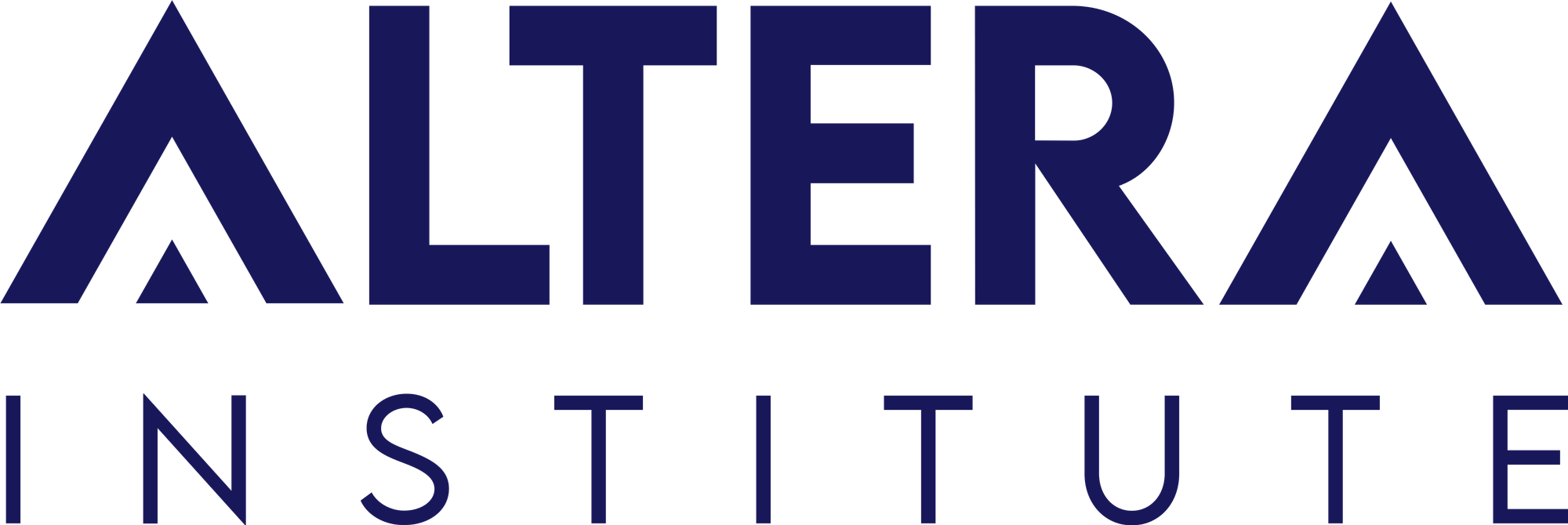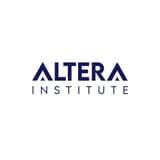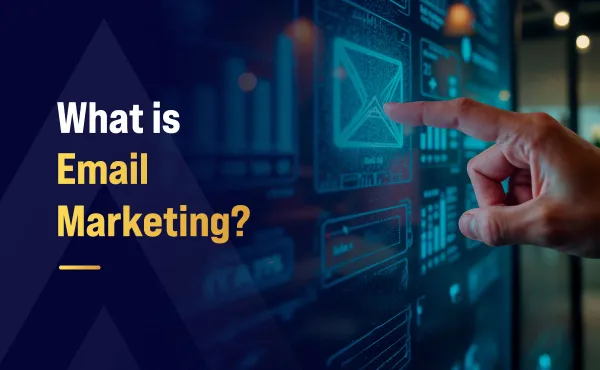Traditional vs. Digital Marketing

In today's rapidly shifting marketing landscape, traditional and digital marketing offer two distinct paths, each with its own techniques, strengths, and applications. Where traditional marketing excels in reach and tangibility, digital marketing shines in interactivity and cost-effectiveness.
With constant innovations, marketing has developed into two main strategic approaches, creating a noticeable divide between traditional and digital methods. While traditional marketing relies on time-tested offline approaches, digital marketing capitalizes on technological advancements and internet-driven platforms.
Provided that some prefer to compare digital marketing to tradition marketing, it can be inferred that some are curious to know the more effective option today. To be honest, the marketing of the present requires a little of both tactics, but with more emphasis put on digital.
This is exactly what the Altera Institute teaches. Altera Institute provides practical digital marketing skills, exposed to real time projects, and provides the necessary assistance to secure a job, so that the student is able to succeed in the current marketing environment.
This article will explore the major differences between digital marketing vs. traditional marketing. It will also understand how they work, their forms, and their pros and cons, helping students, professionals, and entrepreneurs make more informed decisions.
What is Traditional Marketing?
Traditional marketing refers to promotional strategies that use offline media channels, such as print ads, billboards, TV, and radio commercials, to reach audiences. It focuses on using physical advertising materials and media placements to capture consumer attention in daily settings.
Traditional marketing is often deployed in bustling areas or physical spaces where intended audiences are likely to see, hear, or interact with these advertisements. This form of marketing predates digital marketing and focuses on building brand visibility and credibility through established media channels.
Forms of Traditional Marketing
Traditional marketing has various forms, each having its own unique strengths for reaching audiences. Here are the most common types:
Print Advertising:
Print advertising involves placing ads in printed publications like newspapers, magazines, and journals to reach a target audience. It’s often chosen by medium-to-large-sized organizations seeking broad visibility.
This method allows marketers to strategically select publications that align with their audience's reading habits, aiming for memorable design and clear messaging. Print advertising is effective for establishing visual identity across a campaign but can be costly, especially for high-impact placements like covers and right-side pages.
Television and Radio Commercials:
Television and radio commercials are traditional advertising methods used to reach broad audiences through audio and visual media. Television ads combine sight and sound, creating immersive brand experiences with high production quality, which can enhance brand recognition but often come with higher costs.
Radio commercials, focused solely on audio, rely on compelling scripts, voice talent, and sound effects, offering a more cost-effective alternative with quicker production times. Both mediums allow businesses to build memorable brand images, reach targeted demographics, and engage large audiences effectively through strategic placements.

Billboards and Posters:
Billboard and poster advertising involves large-scale forecasts placed along busy roadways or in high-traffic city areas, capturing attention through striking visuals and concise messaging. Commonly seen in iconic locations like Times Square, these ads reach vast audiences daily.
Their relatively smaller dimensions allow for quicker, cost-effective production, making billboard posters especially adaptable for timely campaigns. Positioned to attract commuters and travelers, billboards and posters are an impactful way to promote brands and messages to a local audience.
Pros and Cons of Traditional Marketing
Advantages:
- Broad Audience Reach: Traditional marketing methods like TV commercials, radio, and print ads have the advantage of reaching a wide audience quickly.
This is especially beneficial for brands that aim to reach diverse age groups or demographics. Such media channels are widely consumed across various population segments, particularly in local or regional markets.
- Credibility and Trust: Established media outlets, such as television, radio, and reputable magazines, are generally perceived as trustworthy and reliable. Brands that advertise through these channels benefit from the credibility associated with them, helping to build a positive perception and authority for the brand.
Consumers often view these advertisements as more reputable and enduring than digital ads, which can sometimes be seen as fleeting or unreliable.
- Tangible Presence: Physical advertising materials, like brochures, billboards, and direct mail, have a tangible presence that can make a lasting impression on audiences. Unlike digital ads that can easily be clicked away, these materials are often placed in high-traffic areas where they’re seen repeatedly, which can reinforce brand recognition.
Having a physical item, such as a brochure or flyer, can also enhance brand recall, as people can physically interact with it and even keep it for future reference.
- Brand Recognition: Consistent visibility through traditional media channels enhances brand recognition, as the repetition of seeing an ad over time solidifies a brand’s presence in consumers’ minds.
Traditional media placements, such as radio jingles or iconic billboard locations, can leave a memorable impression that digital ads sometimes lack, due to their shorter attention span. This repeated presence on well-known media channels helps foster familiarity and establishes trust with the brand.
Disadvantages:
- Limited Targeting: Traditional marketing lacks the detailed audience segmentation available on digital channels, making it difficult to target specific demographics with precision.
For instance, a TV commercial or print ad reaches a broad audience without distinguishing individual interests or purchasing behaviors, resulting in higher ad spend for potentially less relevant impressions. This broad approach can make it difficult for businesses to personalize their messages or focus their budget on reaching only those who are most likely to buy.
- High Costs: Traditional marketing methods, particularly television and radio ads, often come with significant expenses for production, placement, and airtime. For smaller businesses, these expenses can be unaffordable.
Unlike digital marketing, which can operate on flexible budgets, traditional advertising may require larger upfront investments, with additional fees for prime-time slots or full-page print ads, making it less accessible for companies with limited budgets.
- Harder to Track: Tracking the performance of traditional marketing campaigns and accurately measuring their ROI can be challenging. Metrics such as reach, brand awareness, and conversion rates are often estimated through external surveys and focus groups, which are less precise than digital analytics.
The absence of reliable data can hinder marketers from accurately gauging the success of their campaigns, making it challenging to make informed, data-driven changes.
- Less Flexibility: Once traditional marketing campaigns are launched, making changes to them is both complex and expensive. For example, a print advertisement in a magazine cannot be changed once it is published, and TV commercials require substantial resources to update.
This lack of flexibility can be a disadvantage in fast-changing markets, where digital campaigns can be adjusted in real time. Traditional marketing’s relatively rigid structure may not align well with the need for agile responses to new trends or customer feedback.
What is Digital Marketing?
Digital marketing utilizes online channels and digital technology to promote offerings, allowing businesses to target audiences with more accuracy.
It includes a variety of approaches such as social media marketing, search engine optimization (SEO), paid advertising, email campaigns, and online video content to promote products or services.
Often more budget-friendly and data-driven, digital marketing provides actionable insights that help businesses refine their campaigns.
With the increasing time people spend online, digital marketing offers businesses a powerful way to engage customers, enhance brand visibility, and drive conversions, creating a strong presence in the digital space to attract and retain potential clients.
Forms of Digital Marketing
Digital marketing also comes in various forms, each providing unique methods to engage, interact, and convert audiences:
Video Marketing:
Video marketing involves using video content to promote a brand, product, or service. It is a powerful tool to engage and emotionally connect with consumers, making it more effective than text-based content.
The colossal nature of YouTube’s adoption with its 462 million users underscores its significance in the video content landscape, as mentioned by the Digital India Report 2024:
Video marketing can be used independently or as part of a broader strategy, such as social media or content marketing. With the growth of digital platforms and mobile devices, video has become a vital channel for capturing attention, driving action, and creating a lasting impact on audiences.
Social Media Marketing:
Social media marketing (SMM) uses platforms such as Facebook, X (formerly Twitter), and Instagram to strengthen a brand, increase sales, and direct traffic to a website. This enables companies to connect with current customers and reach new ones, with built-in analytics tools to monitor success and improve strategies.
As reported by DemandSage, in 2024, the global social media user base reached 5.17 billion, accounting for over 63.7% of the world’s population. SMM’s power lies in its ability to connect, interact, and gather customer data, making it a crucial tool for influencing consumer behavior.
Search Engine Optimization (SEO):
SEO (search engine optimization) is a technique focused on boosting a website's rank on search engines like Google, driving more organic (unpaid) visitors to the site. It involves creating valuable, user-focused inbound content optimized for search engines while also enhancing a website’s technical performance for a better user experience.
The higher a site appears in relevant search results, the more organic traffic it receives, which helps boost brand awareness and sales. HubSpot reports that 60% of marketers view inbound methods, like SEO, as their top-quality lead source.
Pros and Cons of Digital Marketing
Advantages:
- Targeted Audience Reach: Digital marketing provides unmatched accuracy in reaching specific audiences, enabling businesses to target demographics based on characteristics like age, location, interests, and online behaviors.
Through tools like Google Ads and social media analytics, marketers can define who sees their ads, ensuring that their budget is directed toward those most likely to engage. This focused strategy reduces resource wastage and increases the likelihood of conversions, making campaigns more effective and efficient.
- Budget-Friendly: Digital marketing is highly adaptable to various budget sizes, from small startups to large corporations. Unlike traditional marketing, digital marketing campaigns can start small, allowing businesses to scale up their efforts as they grow.
This adaptability allows small and medium-sized businesses to engage in digital marketing, empowering them to compete effectively in their industries without requiring a significant advertising budget. Additionally, various cost-effective methods, like social media marketing and SEO, allow for organic reach without heavy expenditures.
- Real-Time Analytics: A key advantage of digital marketing is the ability to track campaign performance instantly. Metrics such as click-through rates, conversion rates, and user engagement can be evaluated instantly, allowing marketers to make swift, data-backed changes.
This feedback loop enables continuous optimization, ensuring campaigns remain relevant and aligned with current trends or customer preferences. In contrast, traditional marketing lacks this immediacy, as performance insights are often delayed or based on rough estimates.
- Global Reach: Digital marketing empowers businesses to extend their influence worldwide, removing geographical limitations and enabling them to engage potential customers across various regions. At the same time, tools like geotargeting allow for hyper-local targeting, ensuring ads are shown only in specific areas if desired.
This capability is especially beneficial for brands looking to expand internationally or tap into niche markets without the need for physical presence. Digital platforms enable businesses to have both a global presence and a local influence, catering to various customer bases.
Disadvantages:
- Continuous Adaptation Needed: The world of digital marketing is ever-changing, with regular updates to algorithms, the introduction of new platforms, and evolving consumer behaviors.
Staying updated with the latest trends, tools, and best practices requires consistent learning and adaptation, which can be resource-intensive. For businesses without dedicated marketing teams, keeping up can be a challenge, as outdated strategies may become ineffective or even detrimental to a campaign’s success.
- Crowded Space: The ease of entry into digital marketing has led to a saturated online space, where brands of all sizes compete for user attention. For smaller or lesser-known businesses, standing out can be challenging amidst well-established brands with larger budgets.
The overwhelming amount of digital content can result in "ad fatigue," where consumers become desensitized, making it more difficult for brands to capture attention and foster meaningful interaction. Competing effectively online often requires creativity and a strategic approach to content creation.
- Dependence on Technology: Digital marketing relies significantly on stable internet access and robust technological infrastructure. For businesses and audiences in areas with limited internet access or lower digital literacy, this dependency can create limitations.
Additionally, technical issues, such as website downtime or platform malfunctions, can disrupt campaigns and impact user experience. Unlike traditional marketing, which remains accessible offline, digital marketing is inherently bound to the digital ecosystem, which can restrict its accessibility.
- Vulnerable to Malicious Activities: Digital platforms, while offering immense potential, also expose businesses to various security threats, such as hacking, phishing, and malicious reviews from competitors. Fake accounts and bots can generate false engagement metrics, skewing data and potentially wasting ad budgets.
Moreover, competitors or hostile users may post false negative reviews, which can damage a brand’s reputation if not managed promptly. Businesses must invest in security measures and reputation management practices to safeguard their digital presence from these risks.
Traditional Marketing vs. Digital Marketing: What is the Difference?
The following is an in-depth comparison between the distinctions in traditional marketing vs. digital marketing:
Digital Marketing
- Leverages online channels like social media, websites, email, etc.
- Relies on data analytics, SEO, and targeted social media strategies for precise audience targeting.
- Offers global reach and can pinpoint specific niches for tailored campaigns.
- Promotes high interaction through platforms like social media, email, and comment sections.
- Campaign performance is easily tracked through analytics, monitoring clicks, conversions, and other key metrics.
- Campaigns can be quickly launched and adjusted in real-time based on data feedback.
- Typically, short-term and campaign-focused, with frequent engagement to maintain interest.
Traditional Marketing
- Uses offline media such as TV, radio, print ads, and billboards.
- Targeting is less precise, and often aimed at a broad, mass audience.
- Primarily local or regional in reach, depending on the media used.
- Engagement tends to be lower, with most communication being one-way (e.g., TV, print).
- Measurement is less straightforward, relying more on surveys, estimations, and indirect metrics.
- Execution is slower, with less room for modification once the campaign is live.
- Long-term visibility but limited engagement after the initial exposure.
Why Choose Digital Marketing?
Digital marketing has emerged as the preferred strategy for brands aiming to connect with today’s digital-savvy consumers. As revealed in the latest Dentsu Digital Advertising Report 2024, India has firmly established itself as a leader, with over 800 million internet users. This is expected to fuel the growth of India’s e-commerce sector, pushing it toward a $200 billion industry by 2026.
Here’s an overview of the main reasons digital marketing has become essential.
Reach and Targeting:
Digital marketing’s precise targeting capabilities allow marketers to engage very specific audiences based on factors like age, interests, and behavior patterns. This level of targeting, aided by data analytics, means that businesses can ensure their ads reach the most relevant users, making campaigns more effective and cost-efficient.
Engagement:
Unlike the one-way approach of traditional marketing, digital marketing encourages two-way communication. Whether it’s through live streams, social media engagement, or personalized content, digital channels provide businesses with numerous ways to build strong relationships and foster brand loyalty.
Measurement and Analytics:
Digital marketing provides in-depth analytics for campaign tracking, helping marketers evaluate performance metrics like click-through rates, conversions, and ROI. Unlike traditional marketing methods, such as newspaper ads, you can adjust your strategies mid-campaign, ensuring continuous improvement and higher effectiveness.
Cost-Effectiveness:
Compared to traditional outbound marketing methods like cold-calling, billboards, or TV ads, digital marketing is far more affordable and offers greater tracking ability. Content marketing, for instance, is 62% more cost-effective than traditional marketing, enabling better budget management.
Staying Competitive:
Today’s businesses increasingly rely on digital marketing strategies to remain competitive. Even small companies can vie with larger enterprises through well-planned digital marketing tactics A well-executed SEO strategy, strong social media presence, and content marketing plan can elevate a brand’s visibility, allowing it to compete effectively without a massive marketing budget.
By utilizing various online platforms and techniques, businesses can engage customers, drive sales, and achieve a remarkable ROI while staying competitive in an increasingly digital world.
FAQs
Q1. What is the difference between traditional and digital marketing tools?
Ans: Traditional marketing tools, like TV, radio, and print ads, focus on broad outreach with limited targeting and high costs. Digital marketing tools, such as social media, email, and SEO, offer more precise targeting, real-time tracking, and lower costs, providing a more personalized approach to audiences.
Q2. What are a few types of modern marketing techniques?
Ans: Modern marketing techniques include content marketing, social media marketing, influencer partnerships, email marketing, SEO, and pay-per-click ads. These methods focus on engaging and interacting with customers, building relationships, and targeting specific audiences more effectively through digital channels like websites and apps.
Q3. How effective is traditional marketing?
Ans: Traditional marketing can still be effective for reaching broad audiences and building brand recognition, especially in local or mass-market campaigns. However, it is less targeted and harder to measure, making it less flexible and more expensive compared to digital marketing methods that provide better ROI and real-time analytics.
Summing Up
In the rapidly evolving world of marketing, both traditional marketing vs. digital marketing examples has their place, each offering distinct benefits. While traditional marketing excels in brand visibility and broad reach, digital marketing stands out with its precision, interactivity, and measurable results.
As students and future marketers, understanding the strengths, limitations, and return of investment in digital marketing vs. traditional marketing will empower them to make informed decisions for crafting strategies for small businesses or large enterprises. Here, specialized MBAs and PGPs help equip them to understand the complexities of both traditional and modern-day marketing.
Embracing digital marketing’s innovative tools can lead to more effective campaigns, better customer engagement, and greater long-term success in an increasingly digital world.





